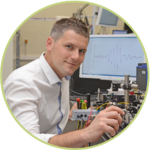
Ioachim Pupeza | Max Planck Institute of Quantum Optics | Garching, Germany
“Field-resolved infrared spectroscopy”
Scientific Talks, Session VIII | Wednesday, September 14 | 10:00 – 10:30

Among quantitative multivariate molecular analysis techniques, broadband vibrational spectroscopy methods uniquely combine advantages of particular importance for applications in biology and medicine: the required sample preparation is minimal, and the specific “vibrational fingerprint” signal is acquired via optical interrogation, fast, non-destructively and in a label-free manner. Recent progress in broadband sources of ultrashort infrared (IR) pulses is heralding a vast new potential for sensitivity and specificity in IR vibrational spectroscopy. The talk will survey recent efforts of our research group toward tapping this potential, as outlined in the following.
Intrapulse difference-frequency generation (IPDFG) driven by powerful, 10-fs-scale near-infrared pulses, delivers trains of broadband Watt-level few-cycle mid-infrared pulses, with a brightness exceeding that of 3rd-generation synchrotron beamlines by a few orders of magnitude, and with outstanding electric-field waveform reproducibility [1,2]. Their temporal coherence enables time-domain electric-field sampling (before and after interaction with a molecular sample). Employing multi-Watt near-infrared gate pulses, we advance the sensitivity of electro-optic sampling (EOS) in the molecular fingerprint region toward the fundamental quantum limit. This renders the combination of IPDFG and EOS in field-resolved spectroscopy ideal for studying (resonant) interactions of light with molecules on their native time scales [3], as well as for broadband vibrational fingerprinting of complex molecular samples with unprecedented sensitivity and dynamic range [4].
The frequency-comb nature of the multi-MHz-repetition-rate trains of pulses obtained via IPDFG lends itself to high-resolution spectroscopy of molecular gases. Having extended the bandwidth of femtosecond-enhancement cavity technology to cover the long-wave mid-infrared spectral region [5], along with the aforementioned sensitivity and dynamic range of EOS, now promises an unprecedented combination of multivariate detection range and acquisition speed, possibly enabling rapid, simultaneous monitoring of a multitude of physiologically-relevant volatile organic compounds in human breath.
Finally, the ability of field-resolved spectroscopy to acquire high-signal-to-noise-ratio IR electric fields of 0.1-mm-scale thick aqueous samples [6] opens the door to label-free broadband IR fingerprinting of tissue (sections) and live cells with high throughput. In particular, the latter affords the exciting promise of classification of cells according to their molecular content at speeds of up to ~1000 cells/second.